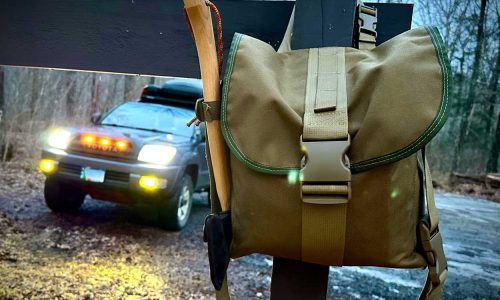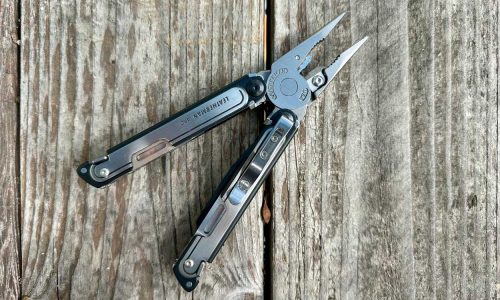Home » Gear Reviews » Hiking & Camping » Knives » Folding Knives » Kershaw Rake
Kershaw Rake Review
August 25, 2014











 81
81 The Good
- Made in the USA
- Blend of two very high quality steels
- Grippy G10 handle scales
- Flip opening
- Assisted opening
The Bad
- Knife broke during testing
- Price is substantial, but not unfair
The Kershaw Rake excels in its construction and quality of materials, edge retention, and generally blew away our expectations. We did break this knife during heavy testing, which may reflect a flaw in the blade, or it may represent a fluke. Overall, we believe the Rake will make a great everyday carry or even backpacking blade.
The Rake is One of Kershaw’s science experiments where they bonded two fairly well-known steels together, designed them into a flipper style blade, and then attached it to a robust G10 handle (G10 is a fiberglass-based laminate that makes a nicely grippy handle). As it turns out, the Rake is beast that can stand up to (almost) anything.
CONSTRUCTION & MATERIALS
Sandvik 14C28N and D2 are two very awesome blade steels. Kershaw has welded these two together—using the Sandvik as the body of the blade and the D2 as the edge. It’s an interesting concept, for sure. Additionally, G10 scales are always welcome, and making them textured to improve your grip makes it all that much more useful in the field.
EASE OF USE
Most flipper-style knives use an IKBS ball-bearing system to rotate the blade open at lightning fast speeds. Kershaw has designed a proprietary mechanism and it functions beautifully. The tapering and shaping of the handle allows the Rake to fit in almost any hand type. Add in a liner-lock and you’ve got yourself a piece of fried gold.
DURABILITY
I was using the Rake to split a larger piece of scrap wood – hitting the spine with a branch to give me a controlled hit. I do this with every knife that I test. In this particular case, the knife hit an old nail that was in the wood (previously unknown by me) and it cracked the D2, breaking the blade. (I didn’t intend to hit the nail, and don’t usually do so when testing other blades, so it is not entirely fair to criticize this knife over others in this test. However, it does not mean this is an unrealistic situation you may encounter while using a blade like this.) I can only assume this break was a fluke. I believe there must have been an impurity in the metal or a bad heat treat with this particular knife.
D2 tool steel is used in manufacturing to cut steel and other metals. In a worst-case scenario, the steel should have just dented or chipped when it hit the nail. It wasn’t easy, but I tried replicating this situation again farther down the blade edge and that only made matters worse.
STEEL QUALITY / EDGE RETENTION
The D2 steel edge of the Rake held up to all standard cutting tests: cardboard, rope, etc. It also held up in some of the basic chopping tests that I do with all of the knives I test.
To have the blade crack like it did feels out of the ordinary. I will say, however, the nail didn’t make it out unscathed.
VALUE
Kershaw is really coming out with some fantastic knives these days, and the Rake is a shining example of that. From their choice of steel(s) to their choice of functions, and to the concept of bonding (welding) two types of steel together – this knife just blew me away. However, at $150, it’s in the middle range for value for a knife of this performance.
Open Length: 8″
Closed Length: 4.625″

















